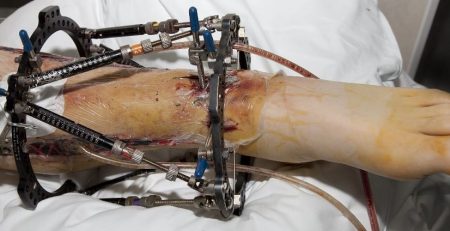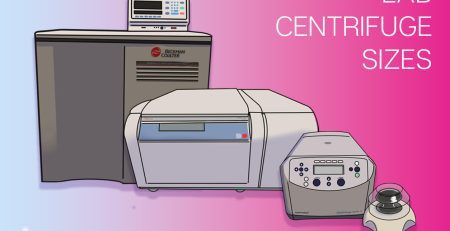
Types of Autoclaves
Amanda2024-05-03T15:07:50+00:00Autoclaves have become vital tools in many industries. They sterilize tools and equipment in the laboratory and medical fields and can also be used for industrial purposes, such as curing composite components that withstand harsh environments. Although they all operate on the same basic principles, they can vary significantly in size, class, and function. All types of autoclaves use high temperature, steam, and pressure to create a specific environment for a particular length of time, but they differ in how they achieve this environment. The kind of autoclave used depends on several factors, including the type of items to be sterilized, the size needed to accommodate them, and how the steam is forced into the chamber.
Classes of Autoclave
There are three classes of autoclaves: Class N, Class B, and Class S. Class N autoclaves are the most basic and are designed to sterilize unbagged, flat, non-porous equipment and utensils. Because they use steam to force the denser air out of a vent in the bottom and do not create a vacuum, class N autoclaves cannot guarantee a complete purge of contaminated air from the chamber. An appropriate load for a class N autoclave would include scalpels, forceps, pipette tips, scissors, and similar utensils. Class N autoclaves tend to be on the smaller side.
Class B autoclaves are the most advanced type of autoclave. They use a vacuum system to remove all air from the chamber before steam is pumped in. This vacuum chamber gives the steam a much greater penetration power to reach into every nook and cranny in the chamber. Class B autoclaves can sterilize all loads, including porous, hollow, and irregularly shaped items. They are typically larger and often built into the wall. They are usually seen in hospitals and large clinics and can be expensive.
A Class S autoclave is an intermediate level between classes N and B. This extensive category includes autoclaves with varying features built for specific purposes. Some class S autoclaves have a vacuum system, but most simply use the gravity displacement method. Some class S autoclaves use a system of steam pulses, where steam is pumped in and removed, usually three times, to create a vacuum in the chamber. Class S autoclaves are more powerful and versatile than class N, but they cannot treat all the same materials that class B autoclaves can. Class S autoclaves are usually smaller but can also be large.
Autoclaves in the Laboratory
Autoclaves play an essential role in the laboratory, and most labs will use some form of them. An autoclave in your laboratory is vital to maintaining a clean and safe work environment. Its ability to completely sterilize materials and hazardous waste makes it indispensable in research and clinical settings. The autoclave eliminates potential contamination by subjecting materials such as glassware, utensils, media, or lab attire (lab coats and safety goggles) to high-pressure heat and steam. This process effectively kills bacteria, viruses, fungi, and other microorganisms that may be present, ensuring accurate results from your experiments.
Medical Autoclaves
Hospitals use numerous instruments and utensils to perform various procedures day in and day out. Tossing these instruments to avoid contamination is not a cost-effective practice, not to mention the environmental impact. Instead, they turn to sterilization to keep costs low and maintain sterile conditions to prevent the spread of disease and infection that could endanger the lives of patients and staff.
Not only do the items being reused require sterilization, but hospitals also generate high levels of biohazardous waste, which must be sterilized before disposal. If this waste is not thoroughly sterilized, it could release dangerous pathogens into the environment. Hospitals achieve this sterilization with specially designated autoclaves called medical autoclaves.
Large and built-in medical autoclaves are typically found in hospitals and large clinics. Class B sterilizers are almost always used to sterilize all types of utensils, tools, linens, and devices. These medical autoclaves must perform at the highest level, killing all bacteria, viruses, fungi, and spores in the chamber. Medical autoclaves can be programmed to perform specific cycles developed and validated according to industry standards. In the United States, medical autoclaves must be approved by the Food and Drug Administration.
Industrial Autoclaves
Autoclaves are used in many industries beyond the laboratory and medical fields. High pressure and steam can strengthen lumber, concrete, and rubber. Pressure-treated wood is used when the lumber must withstand harsh environments and maintain strength. Examples include the lumber used to build outdoor patios, railroad ties, and marina docks.
Autoclaves can be used to generate Aerated Concrete. This specialty concrete is commonly used in constructing floors, roofs, and walls and is prized for its strength while being more lightweight. Exposing the concrete to high pressure and steam inside an autoclave creates air pockets, making it lighter while maintaining structural integrity.
Industrial Autoclaves are also used to vulcanize rubber. Vulcanized rubber is much stronger and more elastic than untreated rubber and can withstand much greater stress. The vulcanization process involves mixing crude rubber with sulfur or another agent and applying heat and pressure to form a cross-linked molecular network that is much stronger than before.
Industrial autoclaves can be large or small, freestanding, or built-in. They have many applications, each requiring its own set of parameters to be met. Therefore, industrial autoclaves can vary significantly between different types of uses. They can be small enough to fit on the table, large enough to hold an entire airplane fuselage, or anywhere between!
Conclusion
Autoclaves come in many different sizes for many other applications. There are three classes of autoclaves, differing in how they allow steam to penetrate the items inside. Medical autoclaves must be able to sterilize everything inside completely. Laboratory autoclaves help keep the lab clean and safe, while industrial autoclaves are used for numerous applications.
Let us help you decide on the right tools and equipment for your laboratory. With over 30 years of combined experience, we can help you choose the appropriate equipment.













